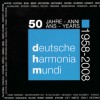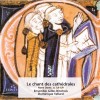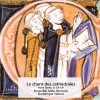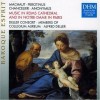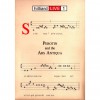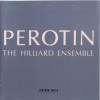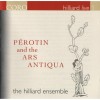| Country: | France |
| Period: | Middle Ages |
Biography
Pérotin (fl. c. 1200), also called Perotin the Great, was a European composer, believed to be French, who lived around the end of the 12th and beginning of the 13th century. He was the most famous member of the Notre Dame school of polyphony and the ars antiqua style. He was one of very few composers of his day whose name has been preserved, and can be reliably attached to individual compositions; this is due to the testimony of an anonymous English student at Notre Dame known as Anonymous IV, who wrote about him and his predecessor Léonin. Anonymous IV called him "Magister Petronius" ("Pérotin the Master"). The title, employed also by Johannes de Garlandia, means that Perotinus, like Leoninus, earned the degree magister artium, almost certainly in Paris, and that he was licensed to teach. The name Perotinus, the Latin diminutive of Petrus, is assumed to be derived from the French name Pérotin, diminutive of Pierre. The diminutive was presumably a mark of respect bestowed by his colleagues. He was also designated "magnus" by Anonymous IV, a mark of the esteem in which he was held, even long after his death.
Pérotin composed organa, the earliest type of polyphonic music; previous European music, such as Gregorian and other types of chant, had been monophonic. He pioneered the styles of organum triplum and organum quadruplum (three and four-part polyphony); in fact his Sederunt principes and Viderunt omnes are among only a few organa quadrupla known.
A prominent feature of his compositional style was to take a simple, well-known melody and stretch it out in time, so that each syllable was hundreds of seconds long, and then use each note of the melody (the tenor, Latin for "holder", or cantus firmus) as the basis for rhythmically complex, interweaving lines above it. The result was that one or more vocal parts sang free, quickly moving lines ("discants") over the chant below, which was extended to become a slowly shifting drone.
Works attributed to Pérotin include the four-voice Viderunt omnes and Sederunt principes; the three-voice Alleluia, Posui adiutorium, Alleluia, Nativitas, and nine others attributed to him by contemporary scholars on stylistic grounds, all in the organum style; the two-voice Dum sigillum summi Patris, and the monophonic Beata viscera in the conductus style.[3] (The conductus sets a rhymed Latin poem called a sequence to a repeated melody, much like a contemporary hymn.)
Pérotin's works are preserved in the Magnus Liber, the "Great Book" of early polyphonic church music, which was in the collection of the cathedral of Notre Dame in Paris. The Magnus Liber also contains the works of his slightly earlier contemporary Léonin. However, attempts by scholars to place Pérotin at Notre Dame have been inconclusive, all evidence being circumstantial, and very little is known of his life. His dates of activity can be approximately established from some late 12th century edicts of the Bishop of Paris, Eudes de Sully, which mention organum triplum and organum quadruplum, and his known collaboration with poet Philip the Chancellor, whose Beata viscera he could not have set before about 1220. The bishop's edicts are quite specific, and suggest that Pérotin's organum quadruplum Viderunt omnes was written for Christmas 1198, and his other organum quadruplum Sederunt Principes was composed for St. Stephen's Day (December 26), 1199, for the dedication of a new wing of the Notre Dame Cathedral. His music, as well as that of Léonin and their anonymous contemporaries, has been grouped together as the School of Notre Dame.
Two important members of the Notre Dame administration have been suggested as possible identities for Perotinus: the theologian Petrus Cantor (who died in 1197) and the Petrus who was Succentor of Notre Dame from at least 1207 until about 1238. Petrus Succentor is more probable, in part on chronological grounds, and partly because of the succentor's role in overseeing the celebration of the liturgy in the cathedral.
With polyphony, musicians were able to achieve musical feats perceived by many as beautiful, and by others, distasteful. John of Salisbury (1120–1180) taught at the University of Paris during the years of Léonin and Pérotin. He attended many concerts at the Notre Dame Choir School. In De nugis curialiam he offers a first-hand description of what was happening to music in the high Middle Ages. This philosopher and Bishop of Chartres wrote:
When you hear the soft harmonies of the various singers, some taking high and others low parts, some singing in advance, some following in the rear, others with pauses and interludes, you would think yourself listening to a concert of sirens rather than men, and wonder at the powers of voices … whatever is most tuneful among birds, could not equal. Such is the facility of running up and down the scale; so wonderful the shortening or multiplying of notes, the repetition of the phrases, or their emphatic utterance: the treble and shrill notes are so mingled with tenor and bass, that the ears lost their power of judging. When this goes to excess it is more fitted to excite lust than devotion; but if it is kept in the limits of moderation, it drives away care from the soul and the solicitudes of life, confers joy and peace and exultation in God, and transports the soul to the society of angels.
Pérotin's music has influenced modern minimalist composers such as Steve Reich, particularly in Reich's work Proverb.







